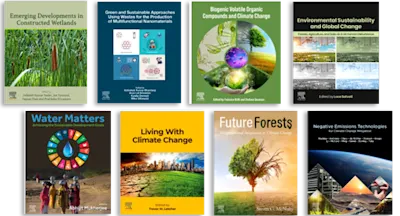
Management of Mycorrhizal Symbiosis for Mycoremediation and Phytostabilization
- 1st Edition - March 25, 2025
- Latest edition
- Editor: Qiang-Sheng Wu
- Language: English
Management of Mycorrhizal Symbiosis for Mycoremediation and Phytostabilization overviews the many advances that have been made in mycorrhizal research and practice. Many microo… Read more

- Provides readers with new insights into mycorrhizae, such as lipids as mycorrhizal energy substances, and diversity of mycorrhizal fungi in various environments
- Presents the role of mycorrhizal fungi in sustainable soil science
- Highlights the potential of phytoremediation and mycorrhizal remediation in contaminated soils
2. Arbuscular mycorrhizal fungi: belowground drivers of plant nutrition
3. Regulation of gene expression in mycorrhizal symbiosis
4. AM fungi-associated glomalin and plant growth: A visual analysis
5. Glomalin related soil protein: A potential soil conditioner and plant biostimulant
6. Improving melon yield, quality, and safety attributes: role of arbuscular mycorrhizal fungi
7. Significance of arbuscular mycorrhizal fungi in improving the growth, chemical profile, and biological activities of medicinal and aromatic plants
8. Role of arbuscular mycorrizal fungi in plant growth promotion and biotic stress management
9. Mycorrhizal fungi and nanotechnology for plant health
10. Mycorrhizal fungi in tropical agroecosystems in America
11. Potential of arbuscular mycorrhizal fungi to support the conservation effort of siompu citrus (Citrus nobilis I.)
12. The bioirrigation concept: contributions of the common mycorrhizal network in cereal-legume intercropping in rain fed agriculture
13. Mycorrhizal fungi in Brazilian tropical biomes
14. Biological control of the citrus nematodes Tylenchulus semipenetrans using arbuscular mycorrhizal fungi
15. Mycorrhizae and soil pathogens in tropical regions
16. Mycorrhizal fungi in infertile and weathered soils
17. Mycoremediation: A bio-based approach towards environmental sustainability
18. Mycorrhiza-assisted phytoremediation and food security: Opportunities and challenges to regain sustainability in soil–crop systems
19. Towards the integration of arbuscular mycorrhizal inoculants in sustainable agriculture. Results in Cuba. Progress and challenges
- Edition: 1
- Latest edition
- Published: March 25, 2025
- Language: English
QW
Qiang-Sheng Wu
Dr. Qiang-Sheng Wu is a professor at the College of Horticulture and Gardening, Yangtze University, Jingzhou, China. Prof. Wu focuses on the functioning and physiology of arbuscular mycorrhizae in plant and soil, with an emphasis on citrus plants. Dr. Wu has published seven books and more than 200 papers in prestigious international journals, including Soil Biology & Biochemistry, Tree Physiology, Environmental and Experimental Botany, Plant Physiology and Biochemistry, Journal of Integrative Plant Biology, Mycorrhiza, Frontiers in Microbiology, Fungal Ecology, Journal of Plant Physiology, Journal of Plant Growth Regulation, European Journal of Soil Biology, and Scientia Horticulturae. Prof. Wu also serves as the editor for several journals, such as BMC Plant Biology, Chemical and Biological Technologies in Agriculture, Agriculture, and Horticulturae.